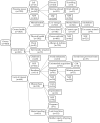Owner-Related Reasons Matter more than Behavioural Problems-A Study of Why Owners Relinquished Dogs and Cats to a Danish Animal Shelter from 1996 to 2017
- PMID: 32575574
- PMCID: PMC7341242
- DOI: 10.3390/ani10061064
Owner-Related Reasons Matter more than Behavioural Problems-A Study of Why Owners Relinquished Dogs and Cats to a Danish Animal Shelter from 1996 to 2017
Abstract
Every year, dogs and cats are relinquished to animal shelters by their owners in large numbers. Reasons for relinquishment of dogs and cats to a large Danish shelter from 1996 to 2017 were obtained and characterised. The reasons were available for 86% of the owner-relinquished animals, including 3204 dog relinquishments (90%) and 2755 cat relinquishments (82%). They were allocated to 59 categories, which were further merged into four owner-related and three animal-related reasons. The most commonly reported of these seven reasons for relinquishment of dogs were owner health (29%), animal behavioural problems (23%), housing issues (21%) and lack of time (14%). For cats, the figures were: owner health (32%), housing issues (26%), and animal behavioural problems (25%). No systematic changes in these patterns were found over time. The number of relinquished cats was roughly stable, whereas the number of relinquished dogs decreased on average by 3% per annum. Owner issues were the primary reason for relinquishment in both species, but nearly one-quarter of the animals were relinquished as a result of behavioural problems. As the latter are often connected with the owner in some way, the results emphasise the importance of a focus on owners when addressing pet relinquishment challenges.
Keywords: Denmark; animal shelter; canine; cat; dog; feline; owner; relinquishment; relinquishment reasons.
Conflict of interest statement
The authors declare no conflict of interest. The funders had no role in the design of the study; in the collection, analyses, or interpretation of data; in the writing of the manuscript; or in the decision to publish the results.
Figures







Similar articles
-
Online Relinquishments of Dogs and Cats in Australia.Animals (Basel). 2018 Feb 7;8(2):25. doi: 10.3390/ani8020025. Animals (Basel). 2018. PMID: 29414919 Free PMC article.
-
Investigating the Reasons behind Companion Animal Relinquishment: A Systematic Content Analysis of Shelter Records for Cats and Dogs, 2018-2023.Animals (Basel). 2024 Sep 7;14(17):2606. doi: 10.3390/ani14172606. Animals (Basel). 2024. PMID: 39272391 Free PMC article.
-
Reasons for Guardian-Relinquishment of Dogs to Shelters: Animal and Regional Predictors in British Columbia, Canada.Front Vet Sci. 2022 Apr 14;9:857634. doi: 10.3389/fvets.2022.857634. eCollection 2022. Front Vet Sci. 2022. PMID: 35498734 Free PMC article.
-
Common feline problem behaviours: Owner-directed aggression.J Feline Med Surg. 2019 Mar;21(3):245-255. doi: 10.1177/1098612X19831206. J Feline Med Surg. 2019. PMID: 30798644 Free PMC article. Review.
-
Common feline problem behaviors: Destructive scratching.J Feline Med Surg. 2019 Mar;21(3):235-243. doi: 10.1177/1098612X19831205. J Feline Med Surg. 2019. PMID: 30810089 Free PMC article. Review.
Cited by
-
Owner expectations and surprises of dog ownership experiences in the United Kingdom.Front Vet Sci. 2024 Feb 7;11:1331793. doi: 10.3389/fvets.2024.1331793. eCollection 2024. Front Vet Sci. 2024. PMID: 38384957 Free PMC article.
-
Climate Change and Companion Animals: Identifying Links and Opportunities for Mitigation and Adaptation Strategies.Integr Comp Biol. 2021 Jul 23;61(1):166-181. doi: 10.1093/icb/icab025. Integr Comp Biol. 2021. PMID: 33871032 Free PMC article.
-
Effects of the COVID-19 Pandemic on the Behavioural Tendencies of Cats and Dogs in Japan.Animals (Basel). 2023 Jul 6;13(13):2217. doi: 10.3390/ani13132217. Animals (Basel). 2023. PMID: 37444015 Free PMC article.
-
Educational Apps and Dog Behavioural Problem Prevention: Associations Between the Zigzag Dog-Training App and Behavioural Problems.Animals (Basel). 2025 Feb 12;15(4):520. doi: 10.3390/ani15040520. Animals (Basel). 2025. PMID: 40003002 Free PMC article.
-
Investigation into owner-reported differences between dogs born in versus imported into Canada.PLoS One. 2022 Jun 15;17(6):e0268885. doi: 10.1371/journal.pone.0268885. eCollection 2022. PLoS One. 2022. PMID: 35704562 Free PMC article.
References
-
- Hirsch E.N., Andersson M., Loberg J. Swedish cat shelters: A descriptive survey of husbandry practices, routines and management. Anim. Welf. 2014;23:411–421. doi: 10.7120/09627286.23.4.411. - DOI
Grants and funding
LinkOut - more resources
Full Text Sources
Research Materials
Miscellaneous

